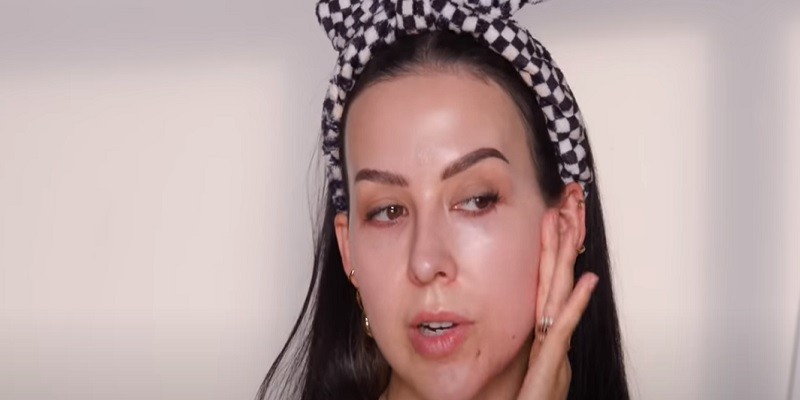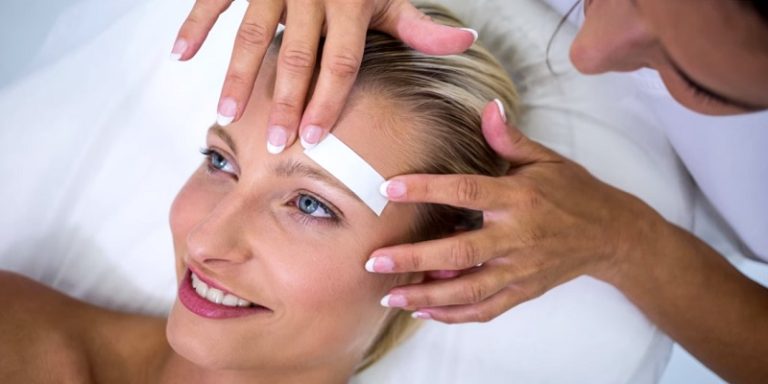How To Prep Skin For Makeup?

Last Updated on June 18, 2025 by Jaclyn A. Neeley
Prepping your skin for makeup is a crucial step that can significantly impact the final look and longevity of your makeup. Proper skin preparation ensures that your makeup goes on smoothly, looks flawless, and stays put throughout the day. This article will guide you through the essential steps to prep your skin for makeup, ensuring a perfect canvas for your beauty products.
Cleanse Your Skin
The first step in any skincare routine, especially before applying makeup, is cleansing. Cleansing removes dirt, oil, and impurities that can clog pores and cause breakouts. It also ensures that your skin is a clean canvas for makeup application.
- Choose the Right Cleanser: Select a gentle cleanser that suits your skin type. For example, if you have oily skin, opt for a cleanser that controls oil without stripping your skin of moisture. For dry skin, a hydrating cleanser is ideal.
- How to Cleanse: Gently massage the cleanser into your skin using circular motions, then rinse with lukewarm water. Pat your face dry with a soft towel, avoiding any harsh rubbing.
Exfoliate to Smooth Skin Texture
Exfoliation is key to removing dead skin cells that can make your makeup look cakey and uneven. It helps to smooth the skin’s surface, allowing makeup to adhere better and last longer.
- Types of Exfoliators: You can use physical exfoliators like scrubs or chemical exfoliators containing ingredients like glycolic acid or salicylic acid. Choose an exfoliator that matches your skin type and sensitivity.
- Frequency: Exfoliate one to three times a week, depending on your skin type. Over-exfoliating can cause irritation and dryness, so it’s important to find a balance.
Apply Toner
Toning is an often overlooked step, but it plays a vital role in prepping your skin for makeup. Toners help to balance the skin’s pH, tighten pores, and remove any residual impurities left after cleansing.
- Choosing a Toner: Look for alcohol-free toners that are gentle on the skin. Ingredients like witch hazel, rose water, and chamomile are excellent for soothing and refreshing the skin.
- Application: Apply toner using a cotton pad or your hands, gently patting it onto your face. Allow it to absorb fully before moving on to the next step.
Hydrate with Serums
Serums are concentrated treatments that target specific skin concerns such as hydration, brightening, or anti-aging. They penetrate deeper into the skin, providing essential nutrients and moisture.
- Types of Serums: For hydration, look for serums containing hyaluronic acid. For brightening, vitamin C serums are effective. Choose a serum that addresses your skin’s needs.
- How to Apply: Apply a few drops of serum to your face and neck, gently pressing it into the skin. Allow it to absorb completely before applying moisturizer7.
Moisturize Your Skin
Moisturizing is a non-negotiable step in prepping your skin for makeup. It ensures that your skin is hydrated, smooth, and ready to hold makeup.
- Choosing a Moisturizer: Select a moisturizer that suits your skin type. For oily skin, opt for a lightweight, oil-free moisturizer. For dry skin, a richer, more hydrating formula is ideal.
- Application: Apply moisturizer evenly across your face and neck, using upward strokes. Give it a few minutes to fully absorb into the skin before moving on to the next step.
Apply Sunscreen
Protecting your skin from harmful UV rays is essential, even if you’re staying indoors. Sunscreen helps prevent premature aging, sunburn, and skin cancer.
- Choosing a Sunscreen: Use a broad-spectrum sunscreen with at least SPF 30. If you have oily skin, look for a mattifying sunscreen. For dry skin, a hydrating sunscreen is beneficial.
- How to Apply: Apply a generous amount of sunscreen to your face and neck, ensuring even coverage. Allow it to absorb before applying any makeup products.
Prime Your Skin
Primers create a smooth base for makeup application, helping to fill in fine lines and pores. They also extend the wear of your makeup, keeping it looking fresh throughout the day.
- Types of Primers: Choose a primer based on your skin type and concerns. For oily skin, a mattifying primer helps control shine. For dry skin, a hydrating primer adds moisture and glow.
- Application: Apply a small amount of primer to your face, focusing on areas where makeup tends to fade or crease, such as the T-zone. Use your fingers or a makeup sponge to blend it in.
Prep Your Lips
Prepping your lips is just as important as prepping your face. Dry, chapped lips can make lipstick application uneven and uncomfortable.
- Exfoliate Your Lips: Use a gentle lip scrub or a damp washcloth to exfoliate your lips, removing any dead skin cells.
- Moisturize Your Lips: Apply a hydrating lip balm to keep your lips soft and smooth. Allow it to absorb before applying any lip color.
Additional Tips for Long-Lasting Makeup
- Facial Massage: Incorporate a facial massage into your routine to boost circulation and give your skin a natural glow. This can be done using your fingers or a jade roller.
- Eye Cream: Use an eye cream to hydrate and smooth the under-eye area, making concealer application easier and more effective.
- Avoid Heavy Skincare Products: Avoid using heavy oils or thick creams right before makeup application, as they can cause your makeup to slide off. If you prefer using oils, apply them at least an hour before makeup.
Conclusion
Prepping your skin for makeup is an essential step that should not be overlooked. By following these steps—cleansing, exfoliating, toning, applying serums, moisturizing, using sunscreen, priming, and prepping your lips—you can ensure a flawless and long-lasting makeup application. Remember to choose products that suit your skin type and address your specific concerns for the best results. With a well-prepped canvas, your makeup will not only look better but also stay put throughout the day.
FAQs
How do you prepare your skin before makeup?
To prepare your skin before applying makeup, start by cleansing your face with a gentle cleanser suitable for your skin type to remove dirt, oil, and impurities. Follow this with an alcohol-free toner to balance your skin’s pH and remove any remaining residue. Next, exfoliate to slough off dead skin cells, creating a smooth base. Apply a lightweight moisturizer to hydrate your skin, and finish with a primer to ensure your makeup goes on smoothly and lasts longer.
What do makeup artists use to prep skin?
Makeup artists typically use a combination of products to prep the skin for makeup. They start with a gentle cleanser to remove impurities, followed by an exfoliator to smooth the skin. A hydrating mist or toner is often applied to refresh the skin. They then use a lightweight moisturizer to hydrate without making the skin greasy. Finally, a primer is applied to create a smooth canvas and help the makeup last longer. Some artists also use specific serums or eye creams to address particular skin concerns.
How to prepare skin for flawless makeup?
To achieve flawless makeup, begin with a thorough cleanse to remove any dirt and oil. Exfoliate to ensure a smooth texture, and follow with an alcohol-free toner to balance the skin. Apply a hydrating serum and a lightweight moisturizer to keep the skin plump and hydrated. Use a primer to fill in pores and fine lines, creating a smooth base for the foundation. Allow each product to absorb fully before moving on to the next step. This routine helps makeup adhere better and last longer.
What should I do first before makeup?
The first step before applying makeup is to cleanse your face thoroughly to remove any dirt, oil, and impurities. This ensures that you start with a clean canvas, which is crucial for the makeup to adhere properly and last longer. Use a gentle cleanser suitable for your skin type, and follow up with an alcohol-free toner to balance your skin’s pH and remove any remaining residue. This sets the stage for the rest of your skincare and makeup routine.
How to choose the right moisturizer for your skin type?
Choosing the right moisturizer depends on your skin type. For oily skin, opt for a lightweight, oil-free gel or lotion that hydrates without clogging pores. Dry skin benefits from richer, cream-based moisturizers that provide deep hydration and restore the skin’s barrier. Combination skin requires a balanced approach, using lighter moisturizers on oily areas and richer ones on dry patches. Sensitive skin needs gentle, fragrance-free formulas with soothing ingredients like chamomile or aloe vera. Always consider additional factors like SPF for daytime use and anti-aging ingredients if needed.






